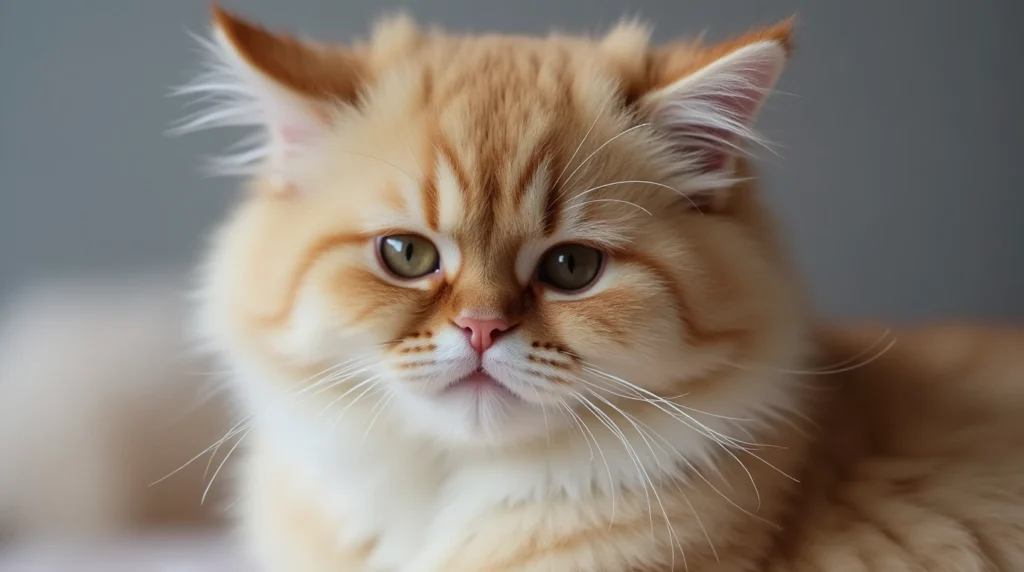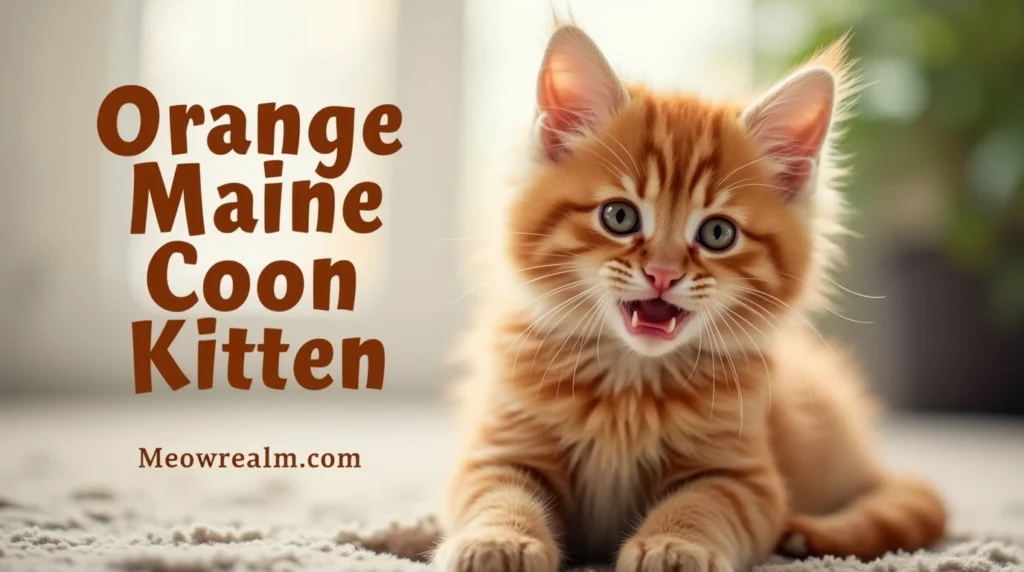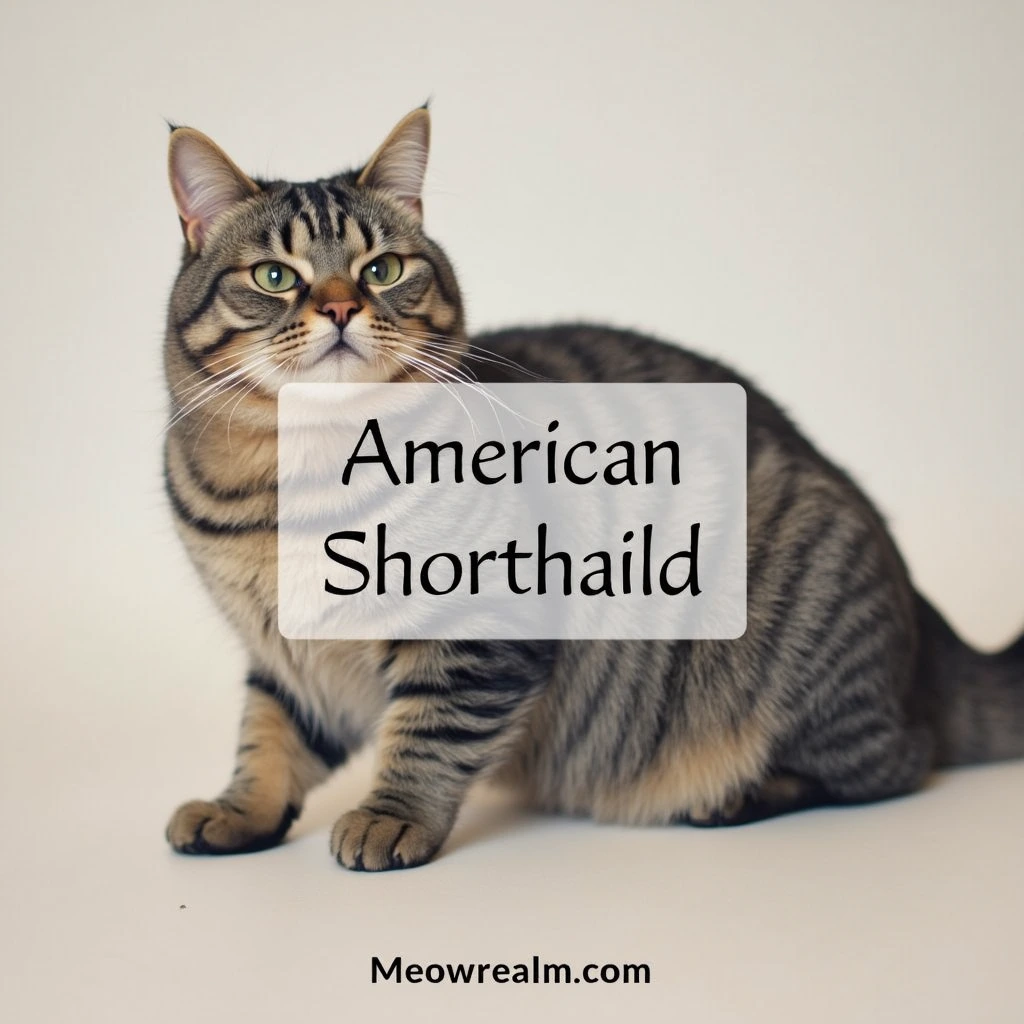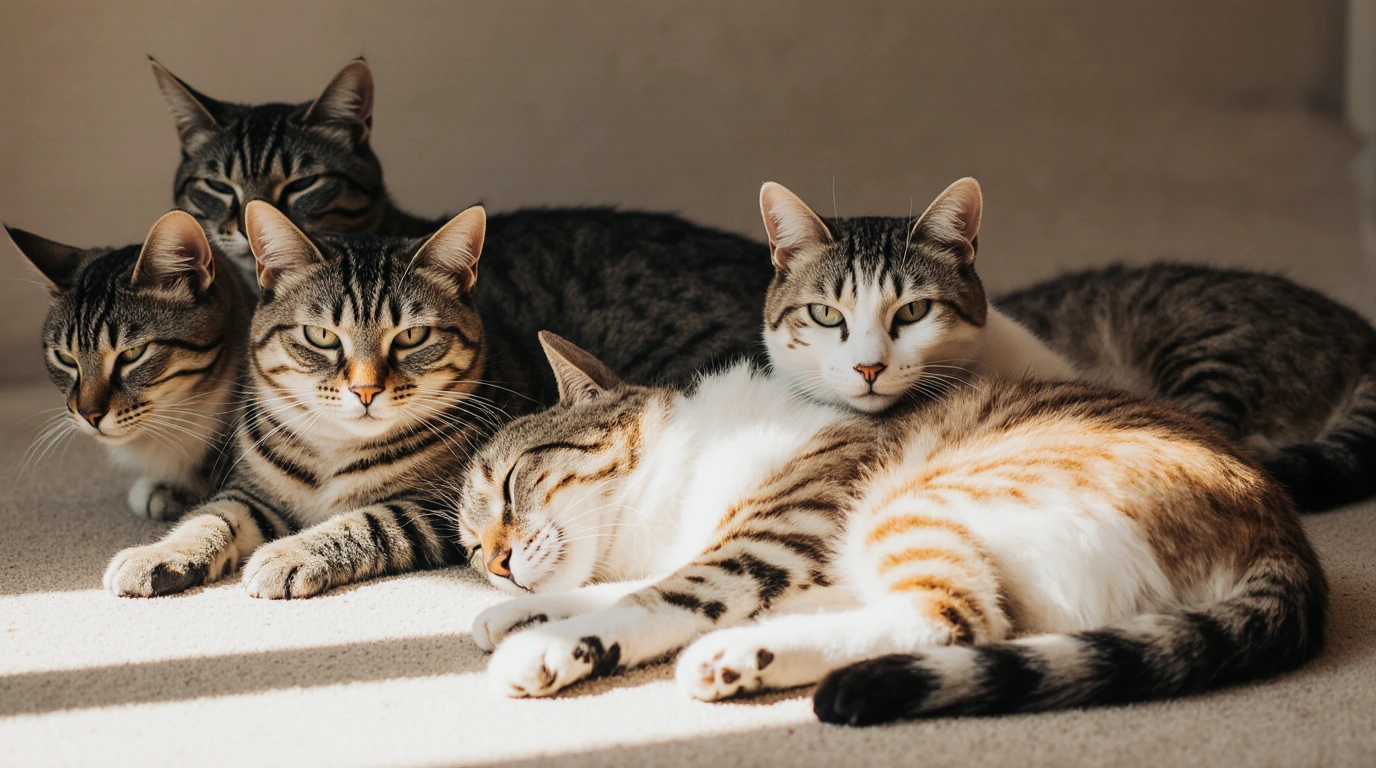Introduction:
The Laziest Cat Breeds for Maximum Couch Companionship
Let’s be honest — some of us aren’t looking for a pet that bounces off the walls at 7 a.m. or sprints across the house like it’s training for the Olympics. If you’re here, you’re likely on the hunt for one thing: the laziest cat breeds. The feline royalty who take lounging to an art form. The ones who’d rather nap beside you during a Netflix binge than scale your bookshelf.
But hold on — “lazy” doesn’t mean boring or unhealthy. These cats are low-key, not low-effort. They’re affectionate, serene, and often deeply bonded to their humans. Whether you live in a small apartment or just crave a pet who matches your vibe, these mellow breeds are perfectly content to snooze the day away in a sunny window.
In this guide, we’ll break down the top ten chillest cat breeds, what makes them so delightfully low-energy, and how to keep them healthy and happy without turning your living room into a jungle gym. Ready to meet your next feline soulmate?
Table of Contents
What Defines a “Lazy” Cat Breed?
Before we crown the kings and queens of cat couch potatoes, let’s clear something up: lazy doesn’t mean lifeless. In feline terms, “lazy” is often code for relaxed, gentle, and low-maintenance when it comes to activity. These are cats that prefer quiet companionship over chaotic play. They’re the ones who will happily spend eight hours curled up on the same throw blanket — and somehow make it look elegant.
So, what exactly makes a cat breed “lazy”? It’s not just about how often they nap (because spoiler alert: all cats nap a lot). It’s about a breed’s default energy level, social temperament, and how much stimulation they seek — or rather, don’t seek.
Here are the defining traits most “lazy” cat breeds share:
- Low activity threshold: These cats are content to move slowly and infrequently. You’ll rarely find them climbing curtains or racing up scratching posts.
- Lap affinity: Lazy breeds tend to be affectionate — not in a needy way, but in a “mind if I melt into you for the next two hours?” way.
- Chill socialization: They don’t mind alone time, but they’re not aloof either. They just prefer calm company over chaos.
- Minimal mischief: You won’t catch these breeds knocking glasses off counters for fun. They’d rather just… not.
That said, here’s the twist: many lazy breeds are also prone to health concerns if their chill lifestyle isn’t balanced. Obesity, joint stiffness, and boredom-related stress can all creep in. That’s why it’s crucial to understand the line between “relaxed” and “neglected.”
Why This Matters
If you’re a homebody, live in a small space, or simply want a peaceful presence, lazy breeds can be perfect. But if you’re assuming low-energy equals low-care, think again. Grooming needs, breed-specific health checks, and emotional stimulation still matter — just in subtler, softer ways.
– FAQ: Can “lazy” cats still be playful?
Yes — absolutely. Lazy breeds tend to have bursts of playfulness, often in short, focused sessions. Think feather wands for five minutes, followed by a three-hour nap. They enjoy interaction — they’re just not hyper about it.
Top 10 Laziest Cat Breeds
If cats held a “Sleep Olympics,” these ten breeds would dominate the podium. Each one brings its own flavor of relaxation — from cloud-like cuddlers to poised sofa statues. Whether you’re craving constant lap time or just a quiet presence in the room, here are the laziest cat breeds that make downtime look like a lifestyle choice.
1. Persian: The Ultimate Lounger

There’s a reason Persians are often called “furniture with fur.” With their flowing coats and unmistakably regal demeanor, they practically invented the slow life.
Temperament: Persians are calm, gentle, and supremely content with lounging. They’re not big on climbing or chaos. Instead, they thrive in predictable, peaceful environments.
Care Notes: That gorgeous coat isn’t low-maintenance — daily brushing is a must. They’re also prone to tear staining and breathing issues due to their flat faces, so regular vet checks are essential.
Why They Rank: Persians embrace stillness like few others. Expect them to nap 80% of the day and never demand more than a soft pillow and your gentle presence.
2. Ragdoll: The Floppy Snuggler
Ragdolls get their name from what they do best — going completely limp in your arms. If you’ve ever wanted a feline that acts like a plush toy, this is the breed.
Temperament: Ragdolls are affectionate, mellow, and famously easygoing. They’ll follow you from room to room, but they’re rarely in a rush. They’re lap cats with loyalty.
Care Notes: Their semi-long fur is surprisingly manageable — a couple of brushes a week should suffice. Just keep an eye on their weight, as their relaxed nature makes them prone to overeating.
Why They Rank: Ragdolls are social snoozers. They’ll curl up beside you for hours, quietly enjoying your company without a hint of neediness.
3. Exotic Shorthair: Lazy Chic
Think Persian, but make it practical. Exotic Shorthairs carry the same laid-back vibe but with a short, plush coat that requires far less grooming.
Temperament: Quiet, sweet, and calm. They’re curious but rarely energetic. You’ll often find them observing the world from the comfort of a soft perch.
Care Notes: Minimal grooming, but still watch for tear stains and breathing issues common in flat-faced breeds. Weekly brushing usually does the trick.
Why They Rank: They’re the definition of low-effort charm — dignified loungers who rarely make a fuss and never demand a circus.
– FAQ: Are these breeds good for apartment living?
Definitely. These lazy breeds thrive in smaller, calmer spaces. As long as they have a sunny spot to nap and the occasional interactive toy, they’re content in city flats or quiet studios.
4. British Shorthair: The Chill Aristocrat
Stoic, round-faced, and endlessly composed, the British Shorthair is the James Bond of the feline world — if James Bond preferred naps to missions.
Temperament: These cats are calm, independent, and prefer observing to participating. They’re affectionate, but on their own terms, often choosing a quiet corner over your lap.
Care Notes: Their dense, plush coat requires weekly brushing, especially during seasonal sheds. Weight gain can creep up if they don’t get modest playtime.
Why They Rank: They embody the phrase “low-key.” British Shorthairs are dignified loungers who enjoy calm households and predictable routines.
5. Birman: The Quiet Companion
Often overshadowed by flashier breeds, the Birman is an underrated gem — soft, soulful, and serene.
Temperament: Gentle and affectionate, Birmans are the kind of cats that quietly follow you from room to room. They don’t demand attention but are always nearby, watching with those deep blue eyes.
Care Notes: Their silky, single-layer coat rarely mats — a quick brush a couple of times a week keeps them looking polished. They tend to stay trim, but enrichment still matters.
Why They Rank: Birmans are indoor-oriented and emotionally intuitive, making them perfect for relaxed homes and sensitive pet parents.
6. Scottish Fold: Ears Down, Energy Low
Known for their signature folded ears and teddy bear looks, Scottish Folds are the embodiment of cozy cat culture.
Temperament: Mild-mannered, affectionate, and sweet-tempered. They’re not particularly playful and prefer lounging over leaping. Expect long stretches of quiet companionship.
Care Notes: Their folded ears can trap dirt or moisture — regular ear checks are essential. Grooming depends on coat length (short vs. long), but neither is demanding.
Why They Rank: These cats thrive in mellow environments. They’re not just low-energy — they’re zen in fur form.
– FAQ: Do these cats need a companion or are they fine alone?
Mostly fine alone. Breeds like British Shorthairs and Scottish Folds enjoy solitude, while Birmans appreciate soft company. If you’re gone long hours, consider adopting a bonded pair or providing enrichment like window perches and scent toys.
7. Chartreux: The Silent Shadow
The Chartreux is like a soft-footed philosopher — quiet, observant, and always calm. With a plush blue-gray coat and gold eyes, they’re as striking as they are serene.
Temperament: Chartreux cats are mellow observers. They bond deeply with their humans but in subtle, low-key ways. They’re not clingy, just quietly loyal.
Care Notes: Their short, dense coat is water-resistant and requires minimal grooming. A weekly brush usually suffices. They’re generally healthy but do benefit from light, consistent play.
Why They Rank: These cats are famously undemanding — the kind of pet who’s always nearby but never in your way. If “introvert energy” were a breed, it’d be Chartreux.
8. Maine Coon: The Gentle Giant (with Lazy Days)

Maine Coons are massive, majestic, and surprisingly chill. While not as lazy as others on this list, their calm, grounded personality earns them a spot.
Temperament: Friendly and affectionate, they’re more likely to observe play than join it. Think of them as the slow-moving, good-natured giants of the cat world.
Care Notes: Their long coat needs consistent brushing to avoid mats. They’re prone to joint issues due to size, so keeping their weight stable is key.
Why They Rank: Though capable of bursts of energy, most Maine Coons prefer relaxed interaction — sitting with you, not sprinting around you.
9. Ragamuffin: The Plush Professional Cuddler
A close cousin to the Ragdoll, the Ragamuffin is heavier, fluffier, and just as fond of flopping into your arms with total trust.
Temperament: Exceptionally affectionate, these cats are cuddle addicts. They’re mellow, quiet, and love being held — truly bred for companionship.
Care Notes: Their thick coat looks high-maintenance but rarely mats. Regular brushing and occasional baths keep them silky. Monitor diet to prevent lazy-cat weight gain.
Why They Rank: Ragamuffins aren’t just lazy — they’re velvety living pillows. They’ll happily snooze beside you for hours without complaint.
10. American Shorthair: The Laid-Back Classic

A reliable favorite in American households, this breed combines easygoing vibes with a hearty constitution.
Temperament: Calm, adaptable, and self-sufficient. They’re content with short play sessions and spend the rest of their time lounging or people-watching.
Care Notes: Low grooming needs. Watch their diet — they love to eat and lounge, which can sneakily turn into weight gain.
Why They Rank: They’re classic housecats for a reason — no drama, no fuss, just a mellow companion who matches your energy.
– FAQ: Which of these breeds is best for first-time cat owners?
American Shorthair or Ragdoll. Both are easy to care for, forgiving of routine hiccups, and very affectionate without being overly needy. Their predictable temperaments make them ideal for new pet parents.
Caring for Lazy Breeds
Here’s the thing no one tells you: lazy cats aren’t necessarily low-maintenance. Sure, they don’t demand constant playtime or bounce off the walls at midnight — but their chill vibe comes with its own quirks. And if you’re not mindful, that relaxing presence on your couch can quietly drift into avoidable health problems.
The Hidden Risk: Stillness = Stagnation
Cats that prefer to lounge 20 hours a day (which isn’t an exaggeration) are naturally prone to:
- Obesity: Their caloric needs are lower, but their appetite? Still very much intact.
- Joint stiffness: Especially in older cats or large breeds like Maine Coons.
- Boredom-related anxiety: Yes, even chill cats can get mentally restless if unstimulated.
Proactive Lazy-Cat Care
- Scheduled Play Bursts
Think short, low-effort sessions — a feather wand for 5 minutes, or a treat ball they’ll lazily bat at for 30 seconds at a time. The goal isn’t to wear them out. It’s to nudge their metabolism into action a few times a day. - Interactive Feeders & Slow Bowls
These add enrichment without forcing intense movement. Bonus: they also help with portion control. - Routine Grooming
Especially for Persians, Ragdolls, or any breed with long fur. Daily brushing prevents mats and reduces stress during grooming sessions. - Flat-Faced Breed Precautions
Exotic Shorthairs and Persians often struggle with tear stains, noisy breathing, and overheating. Keep their faces clean and avoid overheated rooms. - Vet Check Cadence
Lazy cats often mask symptoms — especially weight gain and early arthritis. Twice-a-year wellness visits are a smart baseline.
– FAQ: Do lazy cats need scratching posts or cat trees?
Yes — but keep them accessible. These cats won’t leap six feet in the air to reach a perch. Choose low-profile furniture or horizontal scratchers they can access without exertion.
Choosing the Right Lazy Cat for Your Home
Not all low-energy cats are created equal. Some want to melt into your lap for hours; others prefer being close without being on you. Some need daily brushing; others can go a week without a comb. That’s why picking the right lazy breed isn’t just about cuteness — it’s about compatibility.
Match the Vibe, Not Just the Breed
Start with your daily rhythm. Are you home a lot? Do you love grooming sessions, or are you more of a “brush when it looks bad” type? Here’s how different lazy breeds align with common lifestyles:
- For seniors or solo dwellers:
- Best picks: Ragdoll, Ragamuffin, Birman
- Why: Gentle, people-oriented, and thrive in quiet routines.
- For busy households or families with kids:
- Best picks: American Shorthair, British Shorthair
- Why: Independent yet tolerant. They don’t mind occasional chaos but won’t start it either.
- For apartment living:
- Best picks: Exotic Shorthair, Scottish Fold, Chartreux
- Why: Low spatial demands, quiet, and not prone to zoomies at 2 a.m.
- For people who hate grooming:
- Best picks: American Shorthair, Chartreux
- Why: Short, self-maintaining coats and minimal matting issues.
Emotional Needs Matter, Too
Some lazy cats want quiet companionship — to just be in the room with you. Others are cuddle-centric and will seek touch daily. Ask yourself:
- Do I want a lap cat (Ragdoll)?
- Or just a near-cat (British Shorthair)?
That subtle difference is what will make your match feel effortless instead of frustrating.
– FAQ: Should I adopt one or two lazy cats?
If you’re gone most of the day, consider two. While lazy cats don’t need constant stimulation, many still enjoy soft companionship. A bonded pair can nap, groom, and chill together — keeping each other balanced without extra chaos.
Lazy Cat Care Tips
Just because your cat‘s main ambition in life is perfecting the art of napping doesn’t mean you can go on autopilot. Lazy breeds need care that respects their chill vibe while preventing long-term issues. Think of it as supportive minimalism: doing just enough to keep them purring without overwhelming their low-key nature.
1. Keep Grooming Short & Soothing
Lazy cats don’t want a 30-minute spa session. Instead:
- Brush daily, but briefly — especially for Persians, Ragdolls, and Ragamuffins.
- Use soft, quiet tools — loud clippers or tugging brushes can stress them out.
- Make it a bonding moment, not a chore — start while they’re already lounging.
2. Create Low-Effort Play Rituals
Most lazy cats won’t initiate play, so:
- Schedule 2–3 mini-play sessions a day (5 minutes is plenty).
- Use toys that mimic prey but don’t require chasing (e.g., ribbon wands, treat balls).
- Let them win — reward effort, not stamina.
3. Feed for Calm, Not Couch Potatoes
It’s tempting to just top up the bowl — don’t.
- Portion control is critical, especially for breeds prone to obesity.
- Use puzzle feeders to slow them down and add mental enrichment.
- Monitor treats — even a few extras can tip the scale for a sedentary cat.
4. Vet Checks: Twice Is Nice
Because lazy cats aren’t high-energy, changes in behavior or weight can sneak by unnoticed. Aim for:
- Biannual checkups, even if they “seem fine.”
- Bloodwork every 1–2 years for early warning signs (especially for flat-faced breeds or seniors).
5. Mental Enrichment Without the Fuss
You don’t need a jungle gym to keep a lazy cat happy.
- Rotate toys every week (even if they’re “not playing” with them).
- Try scent swaps — rub a cloth on a friendly dog or another cat and let them sniff.
- Window perches + bird feeders = hours of lazy entertainment.
– FAQ: What’s the best type of toy for a lazy cat?
Simple, slow-moving ones. Ribbon wands, kicker toys, and food-dispensing puzzles work best. The goal is to spark interest without triggering a full-blown cardio session.
Frequently Asked Questions (FAQs)
– Are lazy cats unhealthy?
Not necessarily. Lazy breeds are naturally low-energy, but that doesn’t mean they’re unwell. The key is managing their weight, providing enrichment, and sticking to regular vet checkups. A “lazy” cat that’s healthy will still engage in short play sessions and show affection — just on their terms.
– Which lazy cat breeds need the least grooming?
Top contenders for minimal grooming include:
- American Shorthair
- Chartreux
- British Shorthair
These breeds have short, low-maintenance coats that don’t mat easily. A weekly brush is usually enough to keep them tidy and comfortable.
– Do lazy cats make good pets for seniors?
Absolutely. Their calm temperament, low exercise needs, and predictable behavior make them perfect companions for seniors. Breeds like Ragdolls and Birmans especially thrive in quiet homes where they can offer emotional closeness without constant attention-seeking.
– Can lazy cats live happily in small apartments?
Yes, and often better than high-energy breeds. Lazy cats don’t need much space to be content. A sunny window, a cozy perch, and occasional interaction is plenty. Breeds like Scottish Folds and Exotic Shorthairs are ideal for compact, indoor settings.
– Are lazy cats affectionate?
Many of them are — deeply so. Ragdolls, Ragamuffins, and Birmans are known for bonding closely with their humans. Others, like British Shorthairs, show affection in more subtle, stoic ways. “Lazy” doesn’t mean cold — it often means cuddly without being clingy.

